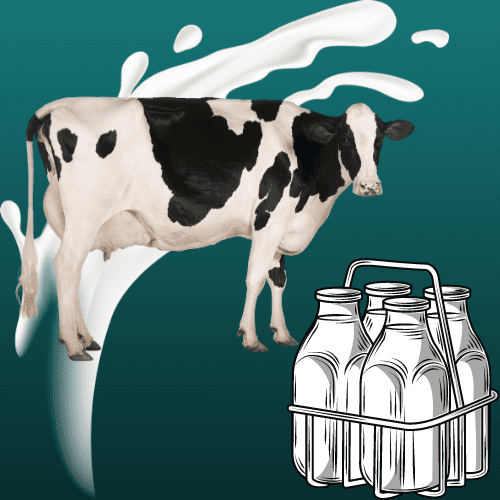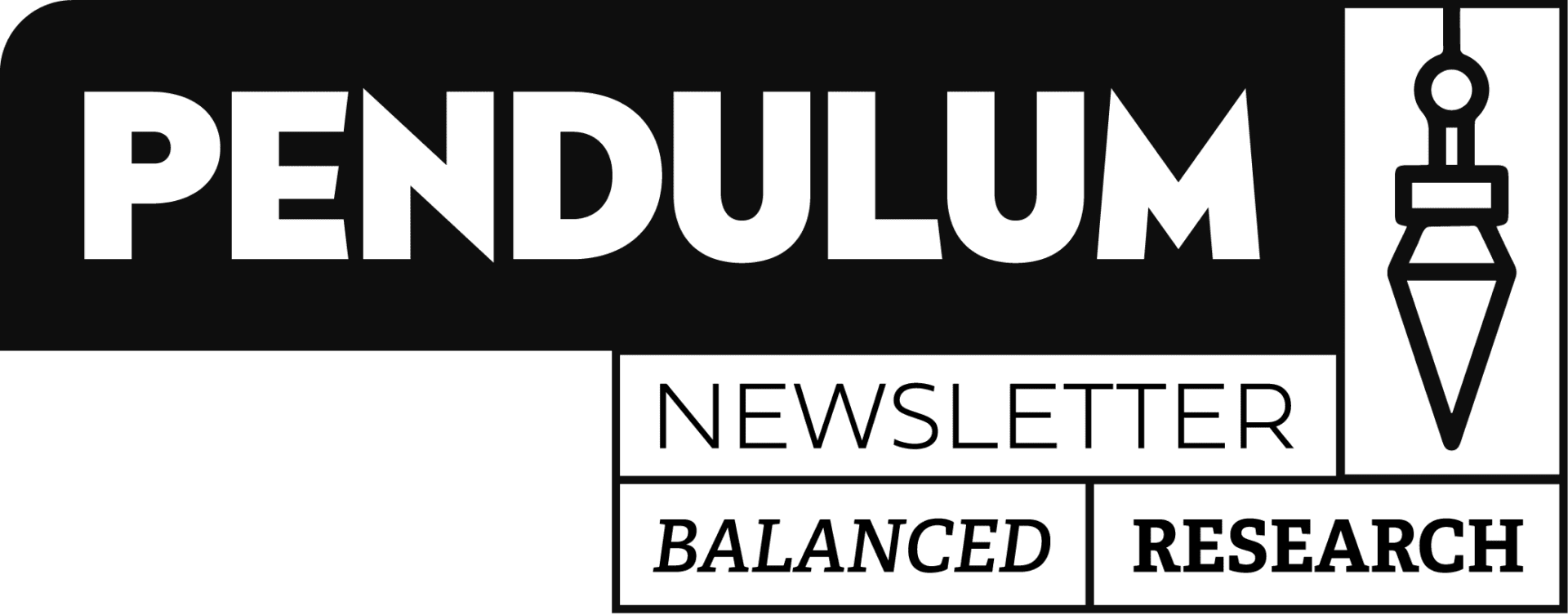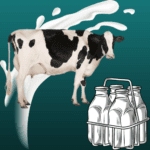
To pick up where we left off last week, milk consumption today is about half of what it was in 1975. It’s not so much that soy milk became a leading competitor driving down milk sales; but that soy, almond, and oat milks exist because much of the population can’t digest milk – despite milk being a necessary American household staple. The name “lactose intolerance” implies non-milk drinkers are the minority group, but 70% of the global population can’t digest lactose in adulthood.
Milk in its raw form is very high-fat, high-protein, nutrient-dense, and is also very high in natural sugars. Cow’s milk is designed for baby calves – calves that double in size in roughly 45 days compared to the 108 days it takes a human baby to double in size. Whale’s milk is 34% fat, which is suitable for the growth of baby whales.
According to Alyssa Hamilton author of Got Milked, “Human milk is high in polyunsaturated fats such as linoleic acid, which are critical for brain development. Cow’s milk is lower in these fatty acids and high in saturated fats and proteins both of which are good for rapid weight gain. Humans need more and less. We need more of the brain-building essentials and less of the body-building baggage.”
In recent decades the weight gain from sodas and sugary sports drinks has been in the spotlight, but few consider the milk in a bowl of cereal as a hidden weight gain food. As America struggles with obesity, it’s easier to blame the Oreos than the wholesome glass of milk next to them.
Lactose is the sugar in milk that most humans can’t digest. The human body needs to produce the enzyme lactase to break down lactose. For those who are lactose intolerant, it means the body stopped producing the enzyme after infancy when it would be presumed milk drinking would stop. Only a few specific populations adapted a lactose tolerance over thousands of years, the largest group being Northern Europeans.
Lactose tolerance is a genetic anomaly that today is helping researchers learn more about human evolution and how genes adapt. According to the NIH and other studies, almost 100% of Asian and American Indian people are lactose intolerant. Other populations such as Hispanic, Black, and Ashkenazi Jewish People all have 60-90% lactose intolerance.
In contrast, lactose intolerance is only found in about 2% of the Northern European population. Not coincidentally, it is likely an adaptation to survive alongside dairy in that region. Today unraveling the genetic puzzle of those who developed the ability to digest lactose has researchers questioning the origins and migration patterns of the Neolithic humans.
“By studying human molecular biology and the archaeology and chemistry of ancient pottery, researchers hope to address a key issue about the origins of modern Europeans. The argument boils down to evolution versus replacement. Did native populations of hunter-gatherers in Europe take up farming and herding? Or was there an influx of agricultural colonists who outcompeted the locals, thanks to a combination of genes and technology?” -Scientific American
The evidence is still being unearthed, literally, but bone fragments and other clues indicate that European Neolithic farmers had migrated from the Middle East, bringing their cows with them. This challenges the accepted theory that Europeans descended from the hunter-gatherers in that region. It’s speculated that the farmers who developed a dairy tolerance had an additional nutrition source from milk in times of scarcity, reproduced more offspring with the same genetic lactose tolerance, grew larger in size, and eventually out-populated the original hunter-gatherers.
Today, a clear migration pattern can be seen by identifying the areas where lactose tolerance is high. Those with Greek ancestry have a 40% lactose tolerance, compared to 90% of Scandinavians. The prevalence of adapting a lactose tolerance in northern regions can speculated that milk provides Vitamin D where sunlight exposure is minimal, essential fats, and other nutrients for survival that a Mediterranean diet wouldn’t need milk to supplement.
Today the consequences of a genetic mutation that allows the body to process milk is tied to the geopolitical context. Once put into today’s framework, it’s white people who are generally adapted to drink milk while mostly people of color don’t digest milk. However, the American breakfast is cereal with milk. Milk is a primary school beverage for children, even if many of the children are lactose intolerant. Today China, Vietnam, and Thailand are running school milk programs hoping that it will be a cheap and convenient way to increase the height of the general population, despite almost none of the children can easily digest it.
Cow’s milk isn’t ideal for the human diet for more reasons than just the lactose. This is why we see so many variations of “milk” from fat-free, skimmed, and 2%, to work around milk’s high fat content. Some of the proteins in milk cause allergies, so there’s a2 milk and cows are being genetically altered to produce milk with different proteins and sugars. These issues with milk are before we factor in cows being fed GMO corn, pumped with hormones, antibiotics, and the added sugar that goes into milk during processing. Next week we will look at Big Milk’s efforts to keep milk in everyone’s fridge by playing up one nutritional source found in milk… calcium.

